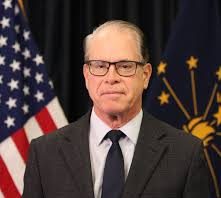INDIANAPOLIS — Local water utilities whose ratepayers are unable to afford needed infrastructure improvements, such as new pipes, mains or leak controls, may get a helping hand from the state.
The Indiana House last week voted 97-0 for legislation establishing an assistance fund that would leverage $20 million in state revenue to support loans and grants to utilities, which, with timely repayments, ultimately could produce more than $2 billion in water system fixes over 20 years.
That nearly matches the $2.3 billion in water infrastructure repairs the Indiana Finance Authority in 2016 estimated are needed throughout the state.
“This is a very important bill,” said state Rep. Ed Soliday, R-Valparaiso, sponsor of House Bill 1406 and chairman of the Indiana Water Infrastructure Task Force. “We’ve let this go for too long, and this is a really positive step. It gets us where we need to be in a timely way.”
Under the plan, water utilities could request loans, no-interest loans, or grants from the fund if they are following several “best practices” required by the legislation.
Those include compiling an up-to-date asset management plan, completing a water leakage study, showing a willingness to collaborate with nearby water system operators and maintaining sufficient revenue to repay the loan while continuing to serve water customers.
Water Loss Through Leaks A Major Issue
Soliday said the leakage assessment is particularly important because the Indiana Finance Authority found the state’s 554 independent water systems collectively treat and distribute 50 billion gallons of water each year that never make it to a customer.
“We lose a lot of water because the pipes are old, and a lot of it that’s processed winds up leaking out into the system,” he said.
The legislation directs the finance authority to create a priority list for determining which water utilities get the first opportunity to access the fund.
At the same time, Soliday said the priority list “can be abridged, if there’s an emergency like Flint or something like that,” referring to the lead contamination in the Flint, Michigan, water supply.
The measure also requires at least 40 percent of the water infrastructure assistance fund be available only to utilities serving fewer than 3,200 customers.
“For some of our smaller water companies, there’s no way they have the rate base to pay for the things that need to be fixed,” Soliday said.
State Rep. Matt Pierce, D-Bloomington, agreed that Soliday is right to dedicate a large portion of the fund to smaller water systems.
Otherwise, Pierce said, “That raises the temptation of just not doing anything, and then eventually you just get to a crisis where your system just doesn’t function. Now people are out of drinking water, which is essential to living.”
The proposal next goes to the Senate, where state Sen. Ed Charbonneau, R-Valparaiso, is the lead sponsor.
Charbonneau largely was responsible for ordering the studies and reviews that over the past six years uncovered Indiana’s tremendous water infrastructure improvements needed.
His Senate Bill 4, which passed the Senate 48-0 in January, divides the state into water regions to promote local utility cooperation and consolidation; requires utilities to annually measure their water lost due to leaky pipes; mandates the governor appoint a “water czar” to coordinate state water programs; and creates a state task force to tackle stormwater management issues.
Soliday is sponsoring that measure in the House.



